
A Hat in Time is an indie platformer PC game that’s being developed for players who want to explore interesting worlds and collect exciting items much like the famous Nintendo 64 era games that made the genre widely popular. Since then, the demand for these platformer games has remained high, but the supply of titles in the genre continues to dip each year. Then A Hat in Time came along a year ago and started a Kickstarter campaign with the funding goal of $30,000. They got almost $300,000.
My friend from college – Vince Vazquez – is an animator for the platformer project, and now that about a year has passed and their gameplay is looking amazing, I felt it was time to reach out for a few updates and a chance to receive valuable animator insights for our ACR readers. Some questions were also answered by Peter Valencia, who is a 3D Artist for the game, and Jonas Kaerlev, who is the Director as well as a Programmer, 3D Artist, and Writer.
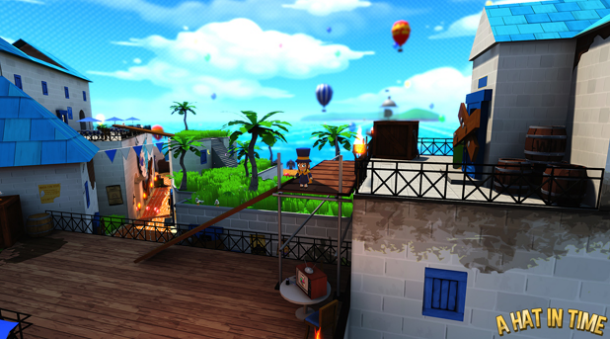
Your Kickstarter took the industry by storm and you saw great levels of attention and success. What was the most surprising aspect of running a Kickstarter? Also, what was the hardest part of running one?
Jonas: The most surprising aspect was easily how much it put our game into the spotlight. The game was very unknown prior to launching, but overnight it became a project a lot of people were looking forward to! The hardest part was answering inbox messages. Kickstarter doesn't say how many we've got but I would estimate around 300. I can't imagine what larger projects like Broken Age must've been like.
About how many different objects in the game have been animated so far?
Well, there's Hat Kid, the Teenage version of Hat Kid (final name TBD), Mustache Girl, the Mafia of Cook Goons & their Boss, Queen Vanessa, a lot of plant-based creatures for the second level, bird characters for the 3rd, several other NPCs, enemies, and other stuff we can't yet spoil (sorry!)… there's somewhere around 20-25 characters right now. With more being added constantly! Now, this doesn't mean they're complete. Some characters may receive more animation later on, there are cutscenes that need to be animated, etc. There are a lot of colorful characters in A Hat in Time, and we certainly don't want the game to seem small or limited in scope just because a small team is working on this game.
As for objects, we also have stuff like the Vaults in our game that are animated as well. There are certain objects that have small animations to add that much more personality & life to the world. Again, as the game evolves, and animators get more priority stuff finished, more and more objects may get this treatment too!
Will there be a Wii U release? Is that confirmed or still undecided?
Just like with the release date, the official word is there is no official word on a console port at this time. This may be frustrating, but we have to focus on building the game first and that means we're 100% focused on PC now.
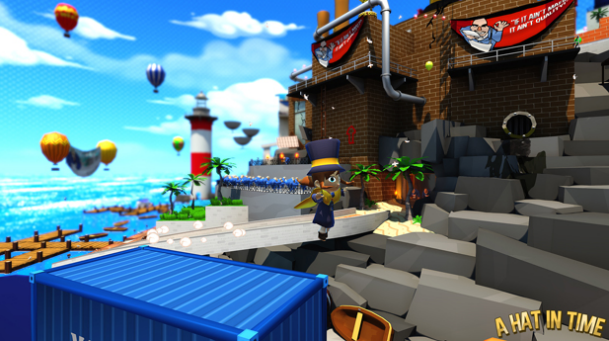
I like that your studio is very modern in today's cyber-centric world, with team members from all over the planet working together on one project. How many total people are working on A Hat in Time currently, and what organization and communication software do you all use the most so that everyone is constantly updated and informed?
The core team involves about a half dozen people. Then we have many contributors outside of that; people hired to provide specialty services (voice actors, for instance). And our special guest composer, Mr. Grant Kirkhope, of course! Though indie development like this is fluid, where team members' roles can shift and people can leave and/or return at any moment for lots of reasons, the current core team working to bring, A Hat in Time to life are: Jonas Kaerlev, William Nichols, Trey Brown, Vince Vazquez, Greg Cooper, Dan Elvins, Peter Valencia. And then our full-time composer, Pascal Michael Stiefel, and our concept artists, Luigi Lucarelli & Shane Frost.
The core team communicates constantly using a private “project management software” website – a site that specializes in collaborative projects. We also use Steam Chat, emails, and Google Docs. All these things allow us to hold meetings and communicate in general.
Where did you get your education? Which schools, if any, did you go to?
Vince: I went to the Art Institute of Pittsburgh, though my major was specifically for Game Design and Animation was only a part of that education. While going to school was a fantastic place to get started and a great environment to find like-minded people who are driven & inspired, which in turn can drive and inspire you, but a lot of education came “on the job”. By doing it, learning by both my successes & failures, and refining the process over time. Also, by jumping headfirst into competitions on sites like 3DTotal.com or 11Secondclub.com. You can learn a lot real fast by the communities at places like those!
Peter: (Well) since I'm self-taught and still constantly learning, I don't consider myself done with the “Education” side yet. So I don't think I can properly answer this for now!
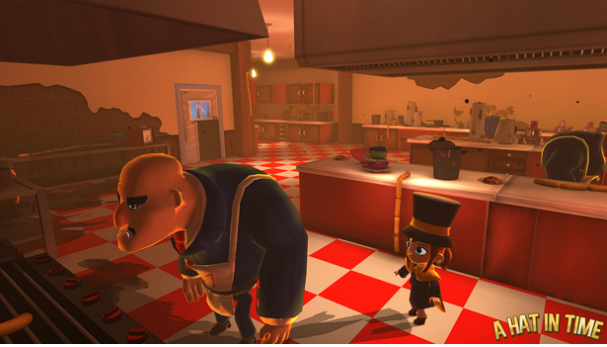
What software do you use the most for the animations in the game? Which program is the easiest to use, which is the most challenging, and is there a single program that's a staff favorite due to its features?
Because of the internet-based nature of our team, and the distance between us all, all the animators (and 3d Artists) use separate programs to do their work! These programs include industry standard software like 3ds Max, Maya, and Blender. The most challenging thing about this approach is dealing with issues whenever we have to migrate work across the different programs, which don't always like to play nice with each other and have provided problems occasionally.
Peter: I use Blender. I think for this answer, everyone is going to tell you something completely different, as everyone always thinks their own program is the easiest one. To me, Blender is the easiest of all, due to its context-sensitive spacebar menu. I don't have to remember where every single button for all features are; I just press Space and type in the action I want to perform, and Blender does it instantly. It saves me lots of time from having to search through countless menus & toolbars and breaking the flow of modeling & animation. Of course, everyone has their own preferred workflow, but every single 3D program out there has a high learning curve just due to the nature of the work. What's difficult to one person may be simple to another, and the reverse can be true as well. Personally, I don't think there's an objectively “easiest” program at all, but rather, we have a variety of great – but different – programs that caters to a specific working style.
Vince: I use 3ds Max personally. I like using the customizable biped in the 'Character Studio' controls to get a rig into the characters quickly. I've used Maya before as well, but I've been using Max for a much longer time, so I'm more acquainted with all the controls for that at this point, though I'm not going to say it's the best or easiest to use. I remember a professor of mine in college said it best when he said something along the lines of, “You're like a chef, and your 3D packages are like the kitchen. Switching to a new kitchen, every tool you use is still there, you just have to figure out which drawer or cupboard it's in”.
What has been the most difficult thing to animate in A Hat in Time so far? How long did it take to complete from start to finish?
Vince: So far, I'd say it was the Mafia “Ringleader” Boss. He's not someone players see as often as some other models, yet he's still a major character, so he has to make an impression faster. His personality has to come through in the few animations you'll see during the fight. He has to be threatening but also not too menacing since he's an early boss. Getting those, sometimes conflicting things, across is a fun challenge to tackle. He took many hours over a period of a little more than 2 weeks since that's how we work on things, in 2-week sprints.
Peter: For me, it was a poker chip flipping animation (for a character). It required extremely close attention to detail, with every finger bone animated very carefully in sync with the chips' movement, which themselves were also rigged and moving around. (It sounds simple, but) It took about 3 hours.
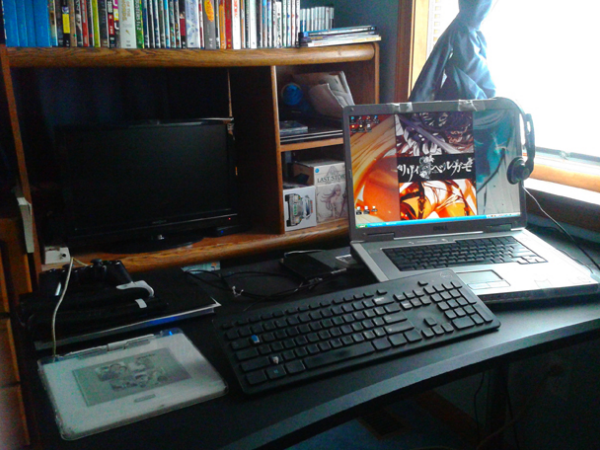
What's a normal "day at the office" for the animators? Can we see some photos of your work stations? (Vince’s office seen in the picture above)
Peter: I do most of my work in the quiet nighttime, when I have come home from other obligations, and almost always when everyone else is asleep. So for me a regular “day at the office” is pretty relaxed and calm. I often tweet or chat with others as I work, and I find that makes a huge difference in my motivations. So does music! I never work without a game soundtrack playing in the background (especially anything from Nintendo!). I would show my work area, but it is always kind of an embarrassing mess! Things you can currently (and almost always) find on it; my Nintendo 3DS, several 3DS games, pencils, tape, countless sticky notes where I jot down ideas, and lots of pizza and/or Subway coupons, ha! My PC workstation itself is an average gaming PC, nothing incredibly high end but it's handled everything 3D that I've thrown at it so I'm happy with it for now.
Vince: “Day at the Office” for me involves first taking a look at our Google Doc with all the tasks listed for all the team members. Basically just choose a task, and get some reference for it. At that point, it just comes down to taking care of business! My workspace is nothing special. It's just my trusty old laptop on my table in my bedroom, in front of my TV. With my headphones always attached – always. Nothing keeps me working smoothly more than listening to music (mostly game soundtracks, and mostly from JRPGs. Yuzo Koshiro, Motoi Sakuraba, and Yasunori Mitsuda are constantly in rotation!) and/or podcasts (mostly a lot of comedy stuff from Earwolf or Nerdist). I'm also currently working to shift things over to a new PC, and so I have the components for that set up on some furniture in my room right now – it's kind of a mess!
What are your favorite resources for animation reference? This can include websites, books or any other reference materials?
Vince: There's so many places on the internet, including animation on Youtube & Vimeo, where you can see not just fantastic work, but also sometimes see part of the process, like animatics & unfinished shots. You can also learn a lot from games with great animation and expressive characters like Sonic the Hedgehog (with his iconic “impatient foot tapping” animation), Sly Cooper or Conker. Looking at other games is great for showing how one should try to get personality injected in their characters through quick animation that won't break the flow of the gameplay. I also like to check out AnimationResources.org for a lot of stuff too; to both brush up on fundamentals or see how professionals do things – to know what I should be shooting for ;).
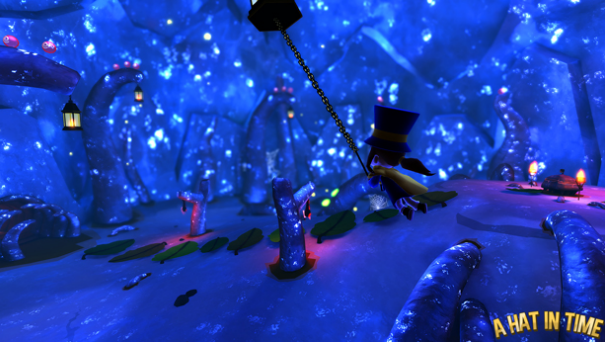
Fill in the blank: The future of animation is ______? In what ways do you think the animation industry will change the most in the next few years?
Traditionally, maybe a good way to fill that blank is with, “Online and independent”. There's some FANTASTIC animation out there on Youtube and Vimeo, from creators all over the World, thanks to anyone being able to upload their work. It's easy for people to miss it out there in the vastness of the internet though, so it perhaps needs a bit of a push to help “legitimize” it some. You can see some movement in that area already – even Disney promotes independent animation on their DisneyShorts Youtube Channel. Over there, alongside Mickey Mouse cartoons, they have animation from students & other indie creators branded as, “Disney Favorites”. A small push to get that kind of stuff on TV more or in front of films, and things can explode.
In terms of the video games, animation has a very bright future, since so much is needed for the industry now. Whether the games are huge productions, or smaller productions, games are EVERYWHERE now – smartphones, PC, consoles, handhelds, and now even set-top boxes like the Amazon Fire TV. The next Mario or Sonic isn't going to move without animators to bring them to life! So the future for a lot of animators lies in the gaming industry, for sure! And as more powerful tech improves gaming presentation and makes characters more emotive, the quality of animation in games is only going to go up! It's a very exciting time for animation!
Is there anything else you would like your followers to know at this time?
Vince: At PAX East this past April, I personally had the great pleasure to meet some fans of the game who have been following it online and supported us on Kickstarter and/or Steam Greenlight. Every single person I talked to – and I'm proud to say gamers of all types; guys, girls, big, short, little kids, adult gamers, cosplayers, Youtubers, and many more – they were all knowledgeable, passionate, interesting, and so enthusiastic towards this game. We are truly making a game that is resonating with the best gamers out there! Thanks for the support & patience, and please keep looking forward to what we have in store for the future! If we got your attention, we know we're making something that is going to be special!
Peter: Seeing the massive enthusiasm people have for the game is really inspiring, and I am constantly grateful that so many of you have interest in our game! Everyone on the team lives & breathes what they do, so I can promise that the game is in the right hands. It may take a while longer, but believe me when I say that we all want the game to be finished and released as much as you do! You can bet the finished product will be worth it.
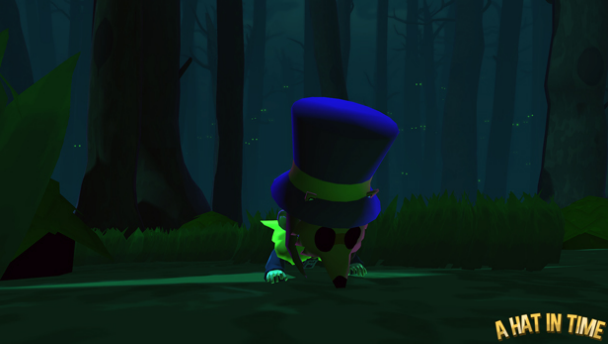
Lastly, what advice would you give to aspiring animators?
Vince: Start animating! Doesn't matter if you have a 3D package, software/set up for traditional hand-drawn animation, or a pencil & paper – the only way to learn it is to do it. We live in a very connected world and there are tons of great resources & tutorials out there for FREE to help you. Whenever I need to learn something new, I check out tons of sites, from 3DTotal to 11secondclub.com Youtube Channels. And animators tend to form great communities at these places, so you can find others to inspire, push, help & support you. You can learn a ton very quickly if you're willing to give it your all, be respectful to others and contribute to the forums.
Seriously, best way to learn is to do, so get out there and check some stuff out!
Peter: Practice is everything. I know that sounds very cliché, but it's so incredibly true. Even if you find a task difficult, the best thing you can do is keep at it. No matter how long it takes, even if that means constant years of practice. If you simply gave up and stop trying, you will never have even given yourself that chance at improvement. With that in mind, believing in yourself will get you VERY far!
Thank you for taking the time to have this interview with us! Be sure to keep Animated Career Review updated on all of your game’s announcements in the future!
Check out more interviews at Animation Career Review's Interview Series.

